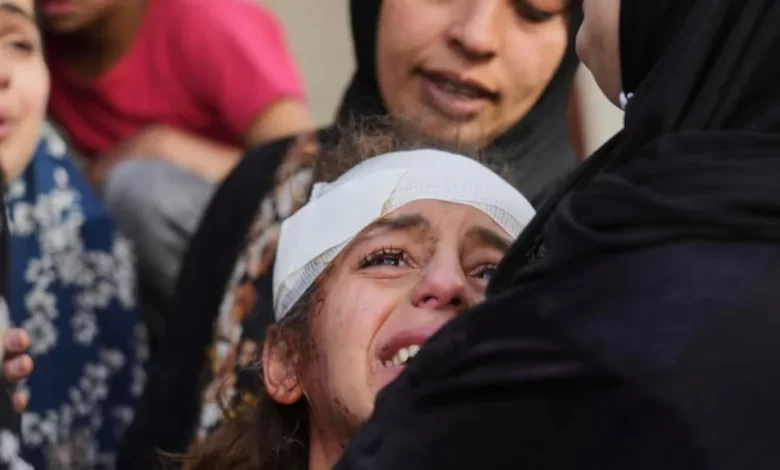
Jordan Daily – Hundreds of thousands of Palestinians fled the southern city of Rafah today in one of the biggest mass displacements of the war, as Israeli occupation forces advanced into the ruins of the city, to make way for what Israel has said is a new “security zone”, Reuters reports.
A day after declaring their intention to capture large swathes of the crowded enclave, Israeli occupation forces pushed into the city on Gaza’s southern edge which had served as a last refuge for people fleeing other areas for much of the war.
Gaza’s Ministry of Health reported at least 97 Palestinians killed in Israeli strikes in the past 24 hours, including at least 20 killed in an air strike around dawn in Shuja’iya suburb of Gaza City.
Rafah “is gone, it is being wiped out,” a father of seven among the hundreds of thousands who had fled from Rafah to neighbouring Khan Yunis, said.
“They are knocking down what is left standing of houses and property,” said the man who declined to be identified for fear of repercussions.
After a strike killed several people in Khan Yunis, Adel Abu Fakher was checking the damage to his tent.
“Is anything left for us? There’s nothing left for us. We’re being killed while asleep,” he said.
The assault to capture Rafah is a major escalation in the war, which Israel restarted on 18 March, ending a ceasefire which had been in place since January.
Israel has not spelled out its long term aims for the “security zone” its troops are now seizing. Prime Minister Benjamin Netanayahu said troops were taking an area he called the “Morag Axis”, a reference to an abandoned former illegal Israeli settlement once located between Rafah on Gaza’s southern edge and the adjacent main southern city Khan Yunis.
Gazans who had returned to homes in the ruins during the ceasefire have now been ordered to flee to communities on the northern and southern edges of the Strip.
They fear that Israel’s intention is to depopulate those areas indefinitely, leaving many hundreds of thousands of people permanently homeless in one of the poorest and most crowded territories on earth. The area includes some of Gaza’s last agricultural land and critical water infrastructure.
Rafah residents said most of the local population had followed Israel’s order to leave, as Israeli strikes toppled buildings there. But a strike on the main road between Khan Yunis and Rafah stopped most movement between the two cities.
“Others stayed because they don’t know where to go, or got fed up of being displaced several times. We are afraid they might be killed or at best detained,” said Basem, a resident of Rafah who declined to give a second name.
Markets have emptied and prices for basic necessities have soared under Israel’s total blockade of food, medicine and fuel.
The Palestinian Health Ministry, which is based in the Israeli-occupied West Bank but has nominal authority over hospitals in Gaza, said Gaza’s entire healthcare system was at risk of collapse.

